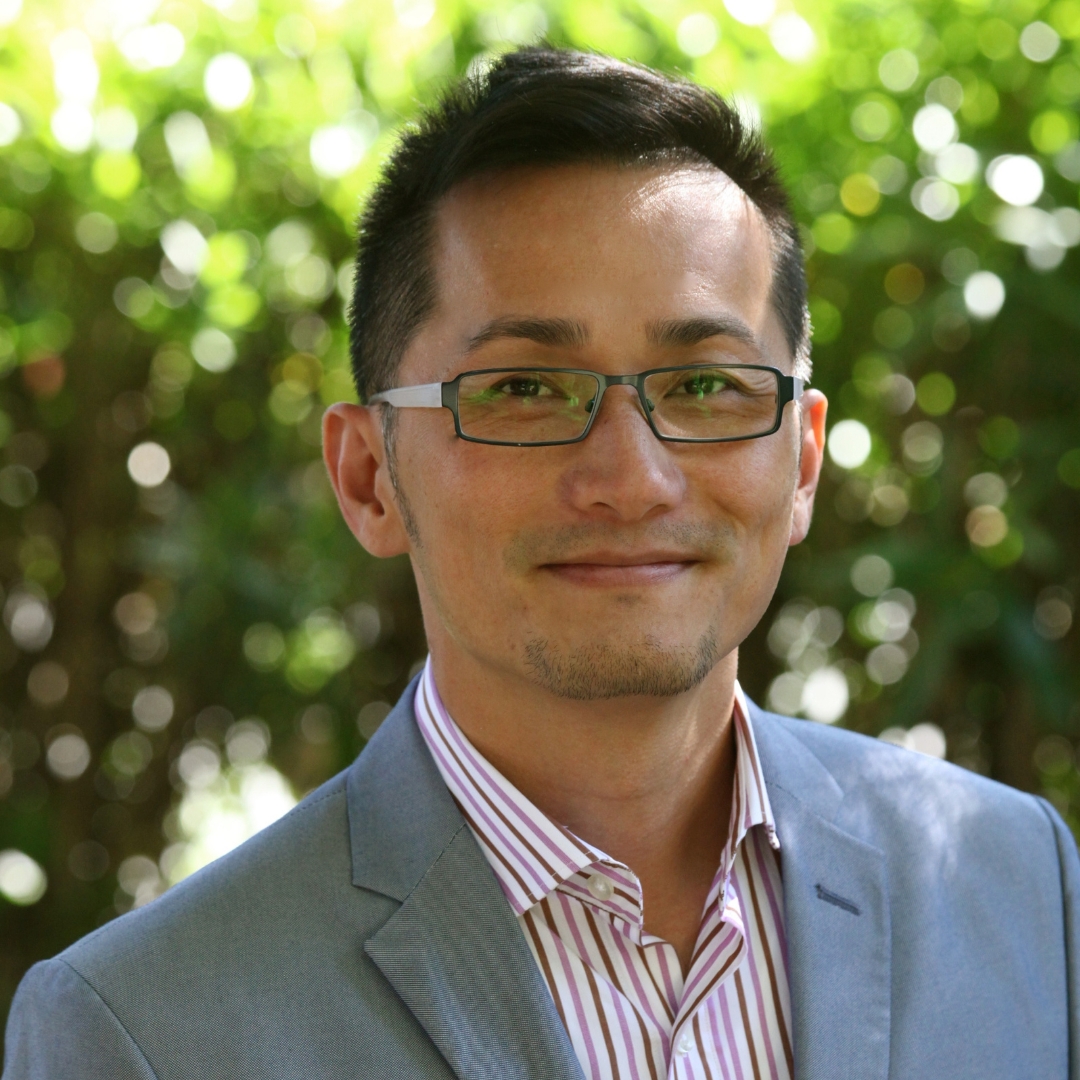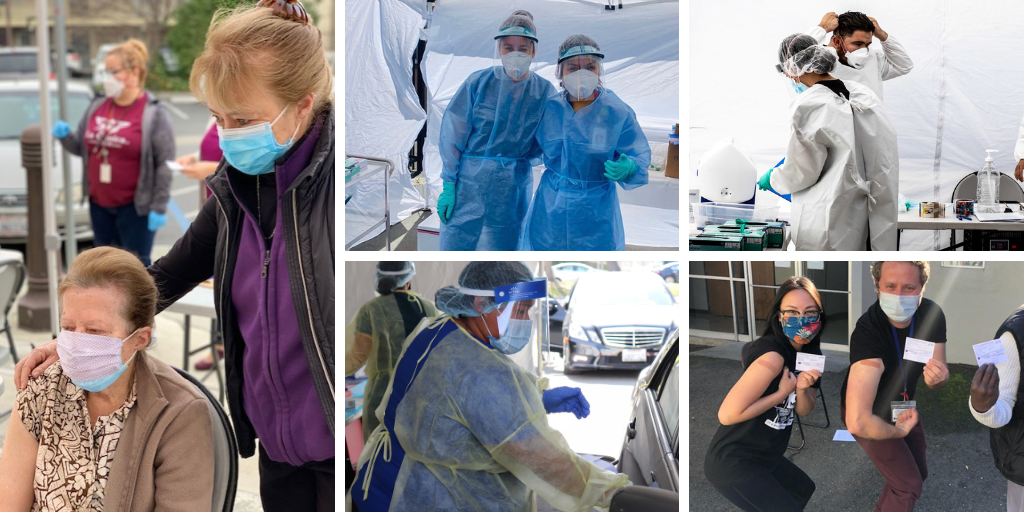Interview with Dr. Tri Do, MD, MPH, FACP (He/Anh, She/Chi, Chanh)
With the recent ending of the Public Health Emergency in California, initially put in place in March 2020, we thought this would be the perfect time to revisit the incredible frontline response and recovery to COVID-19 from our member CHCs. One of the most prolific members of our frontline teams was Dr. Tri Do. Tri was not only our Medical Director at the time, he was also our liaison to Alameda County, working bilaterally with them to ensure that proper response and recovery efforts were made.
This was a time of uncertainty, but it also showcased the incredible hope, the collaboration, and the unwavering resiliency of our CHCs and our county during one of the most unprecedented times in modern history.
We also produced a series of videos that showcased the distinctive, community response to COVID-19 from each of our eight-member health centers, which can be viewed in their entirety below. Watch to see how Asian Health Services, Axis Community Health, Bay Area Community Health, La Clinica, LifeLong Medical Care, Native American Health Center, Tiburcio Vasquez Health Center, and Baywell Health (formerly West Oakland Health), each had their own unique outreach, response, and recovery methods for their patients and communities.
Watch the entire video
 Name: Tri Do, MD, MPH, FACP (He/Anh, She/Chi, Chanh)
Name: Tri Do, MD, MPH, FACP (He/Anh, She/Chi, Chanh)
Title: Chief Medical Officer, Community Health Center Network
Alameda Health Consortium: Tell us a little bit about yourself.
Dr. Tri Do: I came to the United States as a refugee from Vietnam at the age of two. I’ve lived in Hayward most of my life now. I grew up all around the Bay Area and went away to school in Boston, where I got to work and study at two health centers, the East Boston Neighborhood Health Center and Fenway Health. I’m an internal medicine physician but during my residency at a public hospital in Santa Clara, I realized that public health, research and advocacy were just as important to me as patient care. After residency, I landed an HIV research fellowship at UCSF doing social determinants of health research before we even called it that. I spent some time in industry working at a global level with The WHO (World Health Organization) and the United Nations on access to care in developing countries; work that I really loved. But I was really drawn to work in the FQHC (Federally Qualified Health Centers) space and had been on the board of a community-based organization helping them to launch a free clinic in 2009. I left my industry job to become Chief Medical Officer when we became the first new FQHC in San Francisco in 30 years. After being CMO and working on the front lines for many years, I saw a lot of the problems within the safety net delivery system and decided to swim upstream to work at Community Health Center Network (CHCN) to make an impact at a systems level.
AHC: What was it about community health centers (CHCs) that drew you to their work?
TD: As somebody who grew up poor and as a refugee, I continue to identify with the needs of the safety net. I also identify as queer and genderqueer, and the LGBTQI community is often underserved by the healthcare system. A big part of my reason for coming back into community health was to make a difference. My career has taken me to all sectors of healthcare, and all parts of the globe, however, working in community health is the most meaningful for me because of the impact that we have on people who need help the most.
AHC: You joined our team as the Medical Director in 2020, and quickly became a key member of our community health center and Alameda County COVID-19 response support team. How did this role with the county come to be?
TD: That’s a really good question. It was all kind of a blur! It’s hard to believe it’s been just over three years since the start of the shelter in place orders, but I had been tracking this virus since December of 2019. Around the time that I joined CHCN, the county held weekly meetings to organize a response to the pandemic. CHCN was also holding meetings with Health Center executive teams to adapt and respond. I think I mentioned that I have a background in virology and was contributing what I was learning about the science and helping to figure out how to do testing and prevention by applying what I have learned from responding to the HIV and hepatitis epidemics. There are many parallels that many of us who have worked in those spaces have noted! Alameda County was overwhelmed and needed a public health doctor, so they reached out to Ralph Silber, our CEO at the time and Dr. Laura Miller, our CMO, to see if they could lend me and my expertise to be the Deputy Vaccine Lead for the county.
AHC: What were some of the challenges and barriers you encountered as part of the response team? How did you overcome these?
TD: Well to start, they wanted me to work for them for a year and Laura wasn’t going to have that! We all knew that it was going to be an intense endeavor and commitment, so we settled on six months. It really felt like six years, to be honest. There were a lot of 14-hour days and weekends involved, and Laura really stepped up to help with the responsibilities of my day job as the Medical Director, which I continued to perform at CHCN. I had worked with governments before at the national and international level, but was not quite prepared for the challenges of mobilizing a complex organization in an emergency situation. It helped to have the backing of many higher-level leadership, but I think at the end, I just did what I do, which is roll up my sleeves, lean heavily on facts, turn up the charm and bring everyone together around a common goal.
It was really sad and very difficult to see so many people in our community affected by COVID. And we had to be measured in how we rolled out the very scarce supply of vaccines in the first few months. I could see firsthand how inequities were being played out in terms of who got vaccinated. The numbers were just pouring in and I sounded the alarm about how people from certain neighborhoods and people of color were being left behind. There’s an amazing team at the public health department focused on health equity and they really leaned into the response.
Everyone leaned in, we set up pods, mass vaccination pods, and worked with not only CHCN health centers but other health centers in the county to make sure that vaccines were available in the places where they were needed the most. And there was a lot of disinformation coming at us from POTUS and others. The political environment for this pandemic could not have been worse. I helped design a survey of the community around how people perceived the vaccines and what their trusted sources of information were. That was very helpful to inform how we would get the word out. We partnered with a lot of community organizations, faith-based leaders, and of course health centers to get the right information out. Leaders in our community like Dr. Adrian James, former CMO at Baywell Health appeared in videos to inform Black and Brown communities to combat misinformation.
AHC: What were some of the success stories regarding our COVID-19 response and recovery that really stand out for you?
TD: Everybody leaning in and working in a really collaborative space was a key component for not only response but our eventual recovery process. At CHCN, I partnered with Megan Crowley, HIV ACESS Senior Program Manager, and Dan Clanon, HIV ACESS Patient-Centered IT Specialist to form a COVID task force. Initially we focused on testing. Funding was very unstable at the federal level and by extension the state and local levels. Staff and leadership from the health centers met with us weekly to figure out where we could get supplies to perform testing. There was no guidance, so we developed our own point of care testing algorithm, which I adapted from some work that I did with the CDC 10 years before on HIV testing. The county actually borrowed this algorithm, and then months later the CDC came out with something very similar. They say imitation is the sincerest form of flattery, right?
I’m really amazed at how quickly everyone at the health centers was able to scale up mass testing in the conditions that we were working under. The same could be said of the vaccine response as well as the treatment response. Big healthcare systems in our county could not get it together to test and vaccinate their own patients, who came to our safety net health centers for these services. Also, from where we sit and because we do inpatient reviews, we were able to quickly relay data about hospitalization rates amongst health center patients, including homing in on those who are at highest risk due to medical and social conditions. We created a lot of closed loop systems to inform and adapt the response. Our analytics team, led by Yin-Yu Chen, Data Analytics Manager, put together amazing dashboards around testing, vaccinations, and social and clinical vulnerabilities which we should be especially proud of. Health centers were able to use these to target vaccination and prophylaxis efforts (medication to prevent severe infection in people who are immunocompromised or at especially high risk). I have no doubt in my mind that we saved thousands of lives. The CMOs got together and presented all of our learnings at a conference for the underserved, which was a great way to reflect on our collective accomplishments.
AHC: In what ways were community health centers (continue to be) uniquely positioned to provide frontline COVID response and recovery?
TD: I think there was no one better equipped to handle patients who already have complex care needs, linguistic barriers, and barriers in access to care in general. CHCs have always met people from the community where they’re at. They are the trusted resources for patients and community members alike, creating safe spaces for care, response, and recovery in ways many of our larger institutions were not prepared to do. CHCs provided the care, not because they had to, but because they wanted to, it’s what they’ve always done – in the most accessible and equitable way possible.
